- News
- Reviews
- Bikes
- Accessories
- Accessories - misc
- Computer mounts
- Bags
- Bar ends
- Bike bags & cases
- Bottle cages
- Bottles
- Cameras
- Car racks
- Child seats
- Computers
- Glasses
- GPS units
- Helmets
- Lights - front
- Lights - rear
- Lights - sets
- Locks
- Mirrors
- Mudguards
- Racks
- Pumps & CO2 inflators
- Puncture kits
- Reflectives
- Smart watches
- Stands and racks
- Trailers
- Clothing
- Components
- Bar tape & grips
- Bottom brackets
- Brake & gear cables
- Brake & STI levers
- Brake pads & spares
- Brakes
- Cassettes & freewheels
- Chains
- Chainsets & chainrings
- Derailleurs - front
- Derailleurs - rear
- Forks
- Gear levers & shifters
- Groupsets
- Handlebars & extensions
- Headsets
- Hubs
- Inner tubes
- Pedals
- Quick releases & skewers
- Saddles
- Seatposts
- Stems
- Wheels
- Tyres
- Health, fitness and nutrition
- Tools and workshop
- Miscellaneous
- Tubeless valves
- Buyers Guides
- Features
- Forum
- Recommends
- Podcast
feature
 Which chainset is right for you October 2018
Which chainset is right for you October 2018Which chainset is right for you? Should you choose a standard, a compact or something else?
The chainset, called a crankset in some parts of the world, is the name given to the chainrings and the crank arms that turn them. Different chainsets make a big difference to the character of your bike and the way it feels when you ride.
Check out our Beginner’s Guide: Understanding Gears here.
Most road bikes come with a double chainset, meaning that you have two chainrings. The larger chainring gives you bigger, harder to turn gears that move you further per pedal revolution – so it's suitable for higher speeds – while the smaller chainring gives you gears that are easier to turn but move you a shorter distance per pedal revolution – so it's suitable for lower speeds, including riding uphill.
However, some bikes come with a triple chainset, meaning that you have three chainrings, and others use a single chainring matched to a wide-range cassette (the group of sprockets that sit at the centre of the back wheel).
Let’s go through the main road systems in turn.
Standard chainset
A standard chainset (a bit of a strange term these days) has a 53-tooth (or 52-tooth) outer chainring and a 39-tooth inner chainring. This used to be the default option for road bikes and it’s the choice of most racers in the majority of circumstances. Sometimes, though, pros will switch to larger chainrings for time trials or flat races like Paris-Roubaix.
Of the big three groupset manufacturers, Shimano and Campagnolo offer standard chainsets in their higher level road groupsets aimed at pro riders and other racers/serious enthusiasts, but not in their lower end groupsets aimed at more casual riders. SRAM only offers a 53/39 in its Force 22 groupset; the AXS wireless electronic systems have their own take on gearing with smaller chainrings and a 10-tooth smallest sprocket.
The 53/39 chainset is now a rarity outside the professional peloton. The last bike we tested that came equipped with one was in 2017, so we should probably stop calling it a standard crankset, because it isn't. There's apparently a further need for speed among the pros though, because Shimano offers a 54/40 option on the latest Dura-Ace Di2 groupset. That's because, of course, pro cycling is much cleaner these days and without performance-enhancing drugs everyone has slowed down. Yup. Ah-huh.
Example bike Tifosi SS26 Aero
Compact chainset
A compact chainset has a 50-tooth outer chainring and a 34-tooth inner chainring. This means that the gears are lower (easier to turn, but they’ll progress you a shorter distance per pedal revolution) than you get with a 53/39 chainset (above) with the same cassette.
For more details on that, see How much difference does a new chainset make? (below).
Compact chainsets have become massively popular because they allow you to keep moving up steep hills, albeit sometimes quite slowly, and many people prefer to turn smaller gears at a higher cadence (the number of pedal revolutions per minute) because it puts less stress on the knees.
The flip side is that you might run out of gears on very fast descents. In other words, you won’t be able to turn the pedals fast enough to make any difference to your speed above a certain point.
Reflecting their popularity, the three largest groupset manufacturers offer compact chainsets across all of their road groupsets.
Example bike Ribble CGR Ti Sport
Semi-compact chainset
A semi-compact chainset, sometimes called mid-compact or faux pro, has a 52-tooth outer chainring and a 36-tooth inner chainring.
This means that the biggest gears aren’t quite as big as those of a 53/39 chainset but they’re not far off, and they’re larger than those of a compact.
The small gears aren’t quite as small as those of a compact chainset, but they’re smaller and easier to turn than those of a 53/39.
Semi-compact chainsets have become popular over the past few years because they offer something for most types of terrain. Many of the road bikes we review here at road.cc are now fitted with these.
Shimano and Campagnolo offer semi-compact chainsets on all but entry-level road groupsets.
Example bike Quintana Roo SRfive
Sub-compact
Want lower gears? A sub-compact chainset is a double with rings smaller than the compact's 50/34 pairing. Usually they're 48/32 or 46/30, dropping the whole gear range a few percent to make those grinding climbs that little bit less painful.
The gravel/adventure bike movement has been the main driver of sub-compact chainsets. Fat tyres and dirt tracks demand lower gears, especially if you’re carrying anything extra, like clothes and so on for an overnight stay.
But we think they have a place for general riding too. As soon as you hit seriously hilly terrain, there's going to come a moment when you need the lowest gear you can get. You might have blown up, you might have hit a 20% grade or steeper. Options like FSA's Adventure series cranks, Sugino's OS cranks, or the Praxis Works 48/32 cranks give you a slightly lower gear range for those situations.
Example bike: Genesis CDA 30
Triple chainset
A triple chainset is one with three chainrings. Shimano offers triple chainsets for its three cheaper road bike groupsets – Claris, Sora and Tiagra. In each case the chainrings are 50, 39, and 30-tooth. Campagnolo until recently offered Athena in a triple (52, 39 and 30-tooth chainrings) and there are still a few in dealers, but they're rare. SRAM doesn’t offer triple chainsets for its road groupsets.
You do get some very small gears with a triple chainset, but there’s a lot of duplication (different chainring/sprocket combinations giving the same, or virtually the same, gears) and most people find a double chainset with a wide-range cassette ample and more convenient to use.
That said, a triple can be a good idea, especially for something like a touring bike where you need those very small gears to climb while carrying a heavy load.
Swapping from a double to a triple, or the reverse, is quite an expensive process because you need to change other groupset components too.
The wide-range gearing offered by sub-compact chainsets means triples have almost vanished from road bikes. We've seen two in the last couple of years, both on touring bikes.
Example bike: Surly Disc Trucker
Single chainset
Bikes with single chainrings are nothing new, of course – there are millions of them out there – but most aren’t particularly performance-orientated. SRAM offers single chainring versions of its road groupsets with wide-range cassettes.
SRAM says that these 1x (pronounced ‘one by’) groupsets are simpler because there’s no front mech or front shifter, there’s no chance of the chain rubbing on a non-existent front mech, and they’re quieter on rough surfaces.
SRAM also says that the interface between the chain and chainring is better because their specially designed chainrings have tall, square teeth edges that engage the chain earlier, and the traditional sharp and narrow tooth profile helps manage a deflected chain.
When we reviewed the SRAM Rival 1 groupset we said that it was simple and durable. It’s not a system that will appeal to everyone, but for a variety of applications such as gravel, adventure and cyclocross, it makes a lot of sense.
The 1x chainsets are available with a variety of different sized chainrings to suit the riding you do.
Shimano doesn't offer single-chainring set-ups for road bikes, but there are several version of the GRX gravel bike compoent series with single chainrings, and Campagnolo pairs a single chainring (there's no double option) with 13 sprockets in the Ekar gravel groupset.
Example bike The Light Blue Robinson Rival 1x
The SRAM alternative
SRAM turned it up all the way to 12 a few years ago with the Red AXS eTap groupset, quickly followed by a Force version for those without amazingly deep pockets.
Out back the groupsets have cassettes that start with a 10-tooth sprocket, so there's no need for a 54-, 53- or 52-tooth chainring to get high gears.
SRAM therefore offers chainring combinations of 46/33, 48/35, and 50/37, plus the Force Wide system has a 43/30 crankset.
However, all these chainsets are designed to work only with SRAM's 12-speed system. In terms of the gearing they provide and how you'd use them, they pretty much map against the double chainsets we've discussed. If you're used to 53/39 you'd choose a SRAM 50/37. Happy with 52/36? Go for SRAM 48/35. The SRAM 46/33 gives a roughly equivalent set of gears to a compact chainset while the 43/30 is SRAM's answer to sub-compacts.
Of course, the overall gear range you get will depend on the sprockets too, and you'll almost certainly end up with a wider gear range with SRAM because of those 12 sprockets. Whether you add the range at the low end, the top or a little at each end is up to you.
Example bike: Giant TCR Advanced SL 0 Disc
How much difference does a new chainset make?
Say you have a typical 700c wheel fitted with a 25mm tyre, and you’re using an 11-28 cassette. That’s a fairly common setup.
If you have a 53/39 chainset, your smallest gear (39-tooth inner chainring x 28-tooth largest sprocket) is 36.7in. If that doesn’t mean much to you, check out our Beginner’s Guide: Understanding Gears for an explanation. Put another way, if you pedal at 80rpm, you’ll move at 8.7mph.
If you have a compact chainset, your smallest gear (34 x 28) is 32in, so quite a bit smaller than that of a 53/39 chainset. That means it’s much easier to turn the cranks. If you pedal at 80rpm, you’ll move at 7.6mph, so quite a bit slower than when pedalling in the smallest gear of a standard chainset at the same cadence.
If you have a semi-compact chainset, your smallest gear (36 x 28) is 33.9in. If you pedal at 80rpm, you’ll move at 8.1mph.
At the other end of the speed scale, say the maximum cadence you can hold for a short period of time is 120rpm. If you pedal a 53/39 chainset in your biggest gear (53 x 11), you’ll be able to pedal up to 45.4mph at this cadence.
Do the same thing with a compact chainset (50 x 11) and you’ll get to 42.8mph, and with a semi-compact (52 x 11) you’ll get to 44.5mph.
In short, a compact chainset will give you some small gears for keeping moving up steep hills while a 53/39 chainset will allow you to keep the pressure on for longer on fast descents.
A semi-compact gives you some small gears, but not as small as a compact, and some big gears, but not as big as a 53/39 chainset.
Changing chainrings
What if you feel the chainset you’re currently using isn't right for you and the riding you do?
Swapping chainrings is relatively straightforward in many cases (you'll need Allen keys, perhaps a Torx wrench or a chainring nut wrench too), but you need to make sure you get new chainrings that are compatible with your chainset. Chainrings come with different bolt circle diameters (BCDs) and bolt spacings (higher level Shimano and Campagnolo chainsets come with unequal bolt spacings).
In many cases you can turn a standard chainset into a compact chainset simply by swapping the chainrings. You can take a 53-tooth outer chainring off a modern Shimano 105 chainset, for example, and replace it with a 50-tooth chainring because both chainrings use the same bolt circle diameter (BCD). This is also true of Dura-Ace, Ultegra and Tiagra.
This didn’t used to be the case. If you had a compact chainset with a 110mm BCD, you couldn’t fit larger Shimano chainrings with a 130mm BCD.
The point is that you need to be careful to buy replacement chainrings that work with your chainset.
Don’t forget that if you change chainring size, you should adjust the position of your front derailleur accordingly, and you may need to alter the chain length too.
Mat has been in cycling media since 1996, on titles including BikeRadar, Total Bike, Total Mountain Bike, What Mountain Bike and Mountain Biking UK, and he has been editor of 220 Triathlon and Cycling Plus. Mat has been road.cc technical editor for over a decade, testing bikes, fettling the latest kit, and trying out the most up-to-the-minute clothing. He has won his category in Ironman UK 70.3 and finished on the podium in both marathons he has run. Mat is a Cambridge graduate who did a post-grad in magazine journalism, and he is a winner of the Cycling Media Award for Specialist Online Writer. Now over 50, he's riding road and gravel bikes most days for fun and fitness rather than training for competitions.
Latest Comments
- brooksby 3 sec ago
You mean that they are Otherwise Law-Abiding™ ?
- brooksby 7 min 54 sec ago
What fresh devilry is this??? - perhaps they had a design for some handlebars, and another design for some forks, and somewhere along the line the...
- brooksby 11 min 33 sec ago
And finally: I wonder how many of the "more than 3,000" signatures on that petition are actually locals, who live or work there (and are not just...
- Doug_D 1 hour 47 min ago
Another book suggestion - I can highly recommend "Lost Summers and Half-Forgotten Afternoons: A Mint Sauce collection" - a beautifully presented...
- chrisonabike 3 hours 6 sec ago
But... the last is only not the case with drivers on normal roads because driving on the cycle path / footway / rolling a vehicle up there is seen...
- mdavidford 3 hours 38 min ago
I think you're missing an opportunity to pack even more tech into it - add accelerometers that can detect whether they're pedalling or stepping....
- chrisonabike 4 hours 2 min ago
Thanks. I guess the question is "need". If the road is busy, it sounds like it is a desired route between places? In which case (given this an...
- mdavidford 4 hours 10 min ago
Don't know what you mean. I thought my suggestion was entirely practical.
- Rapha Nadal 4 hours 45 min ago
I'd buy a motorbike fo rthat kind of money!

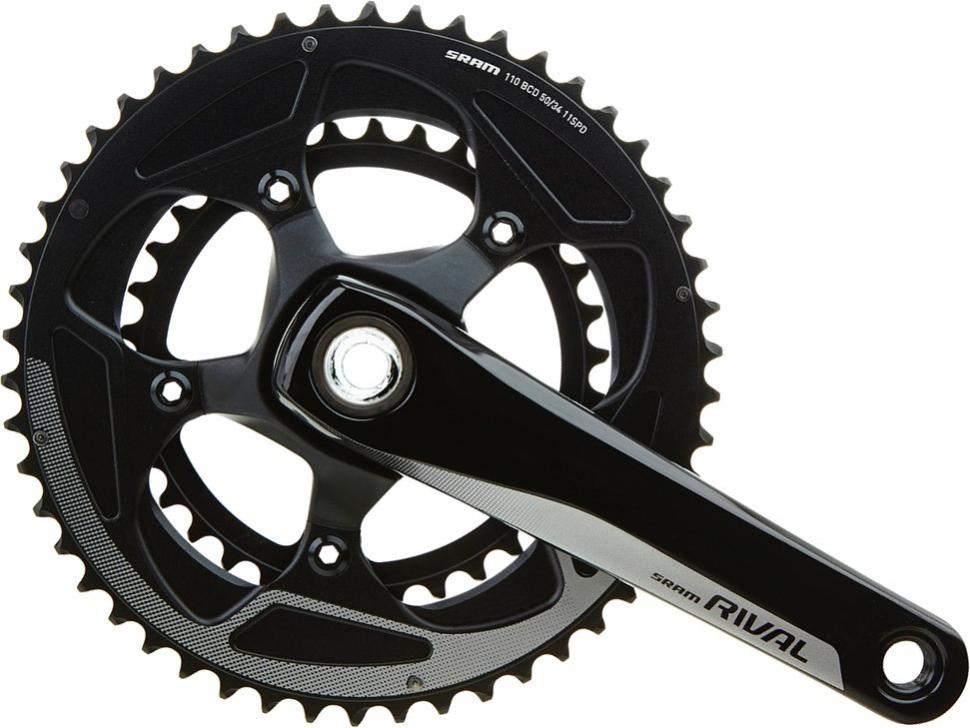
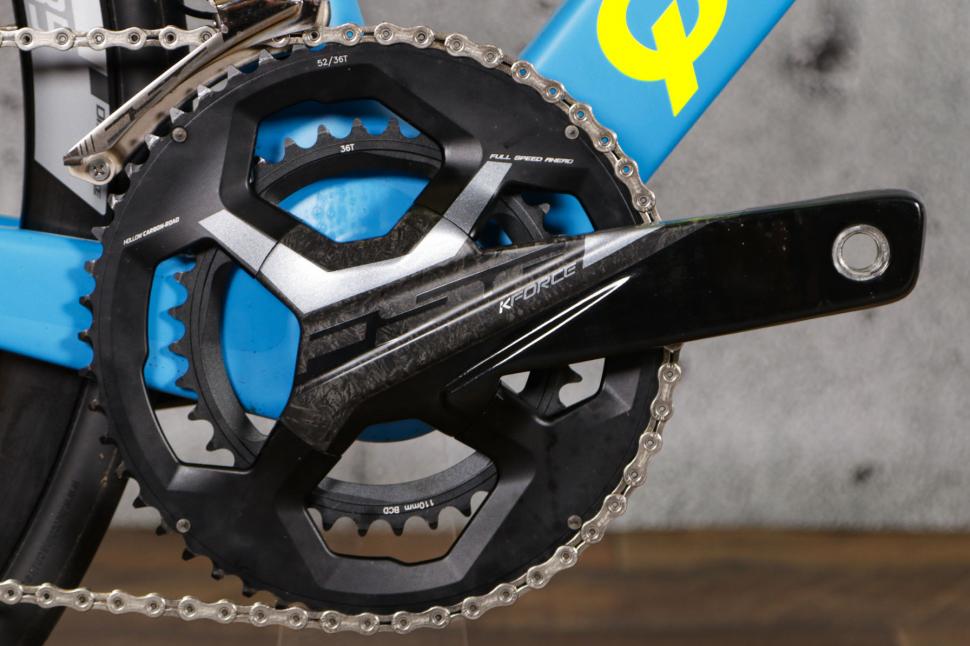
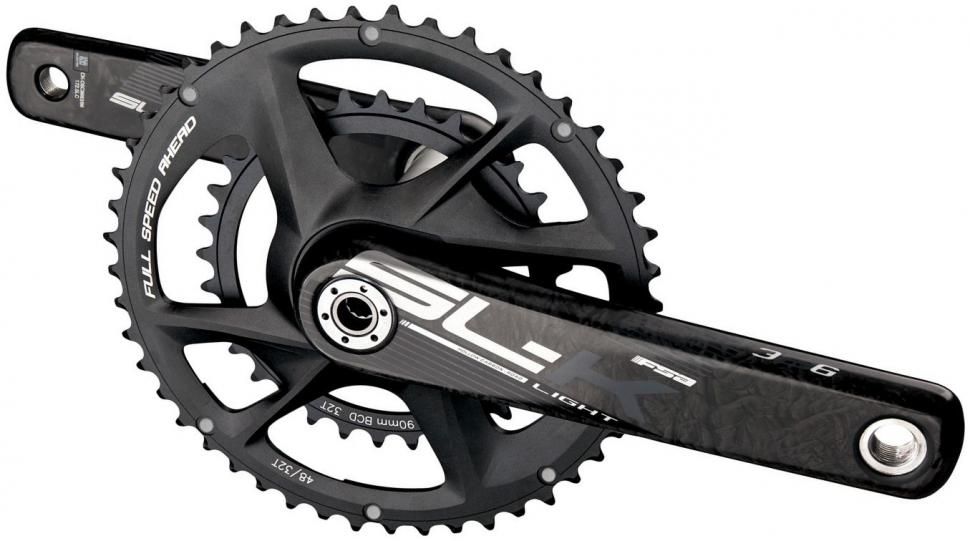
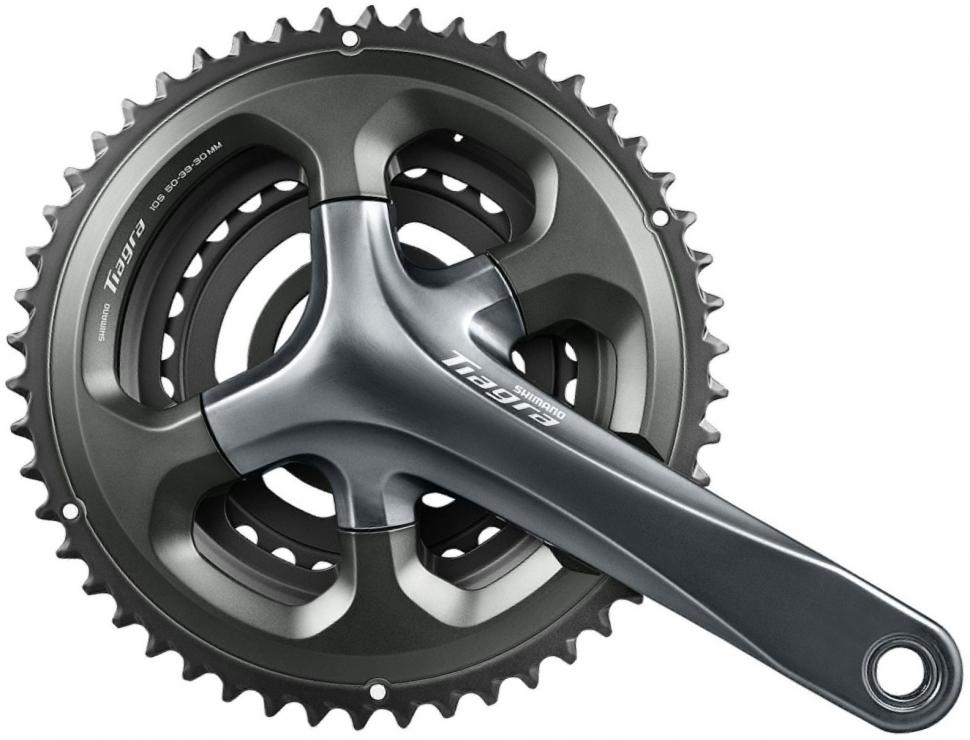

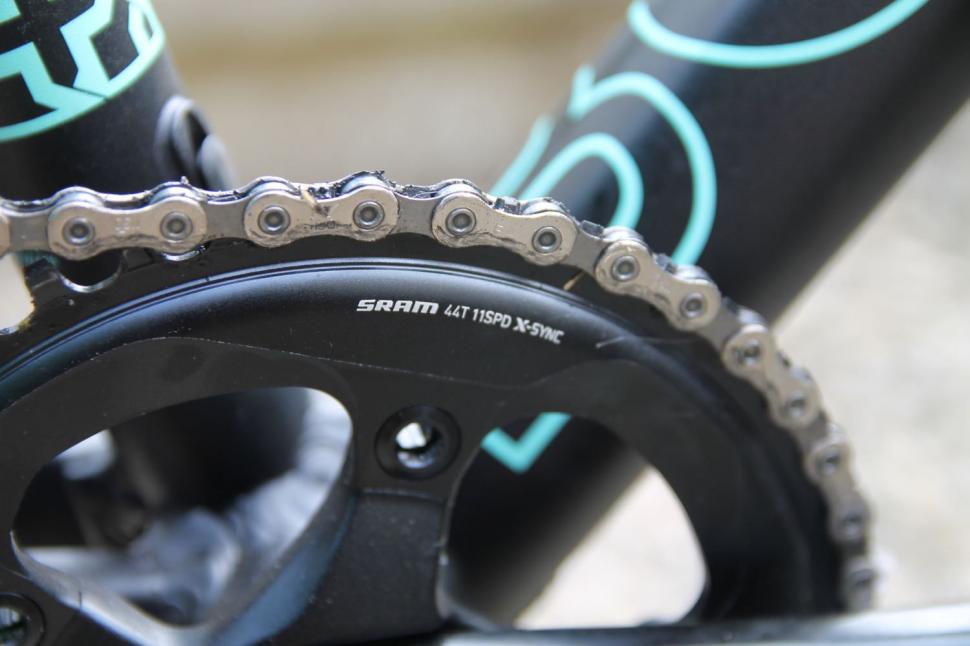
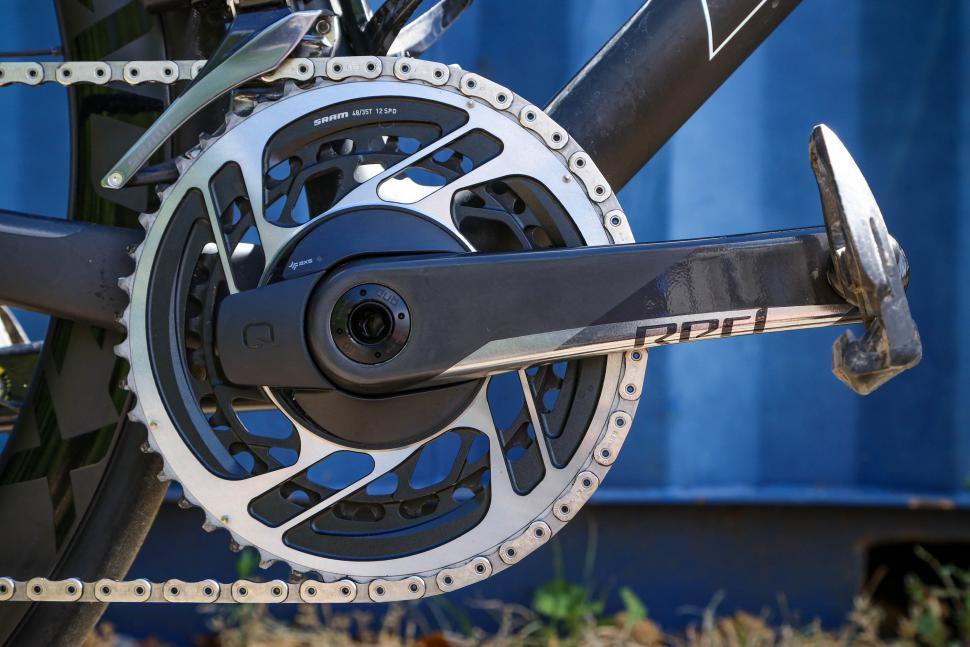
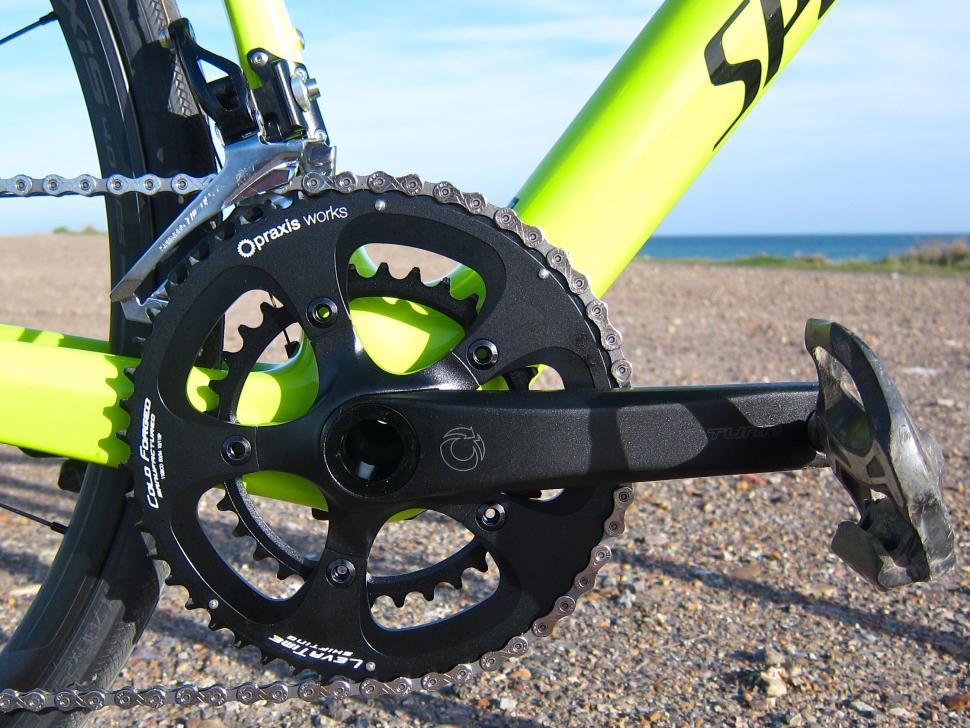
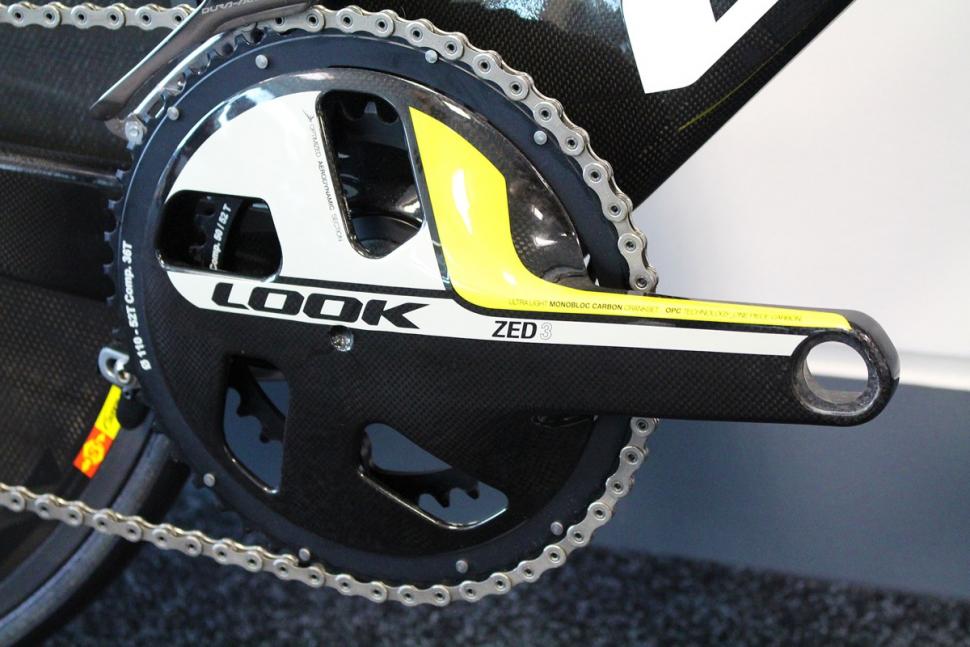
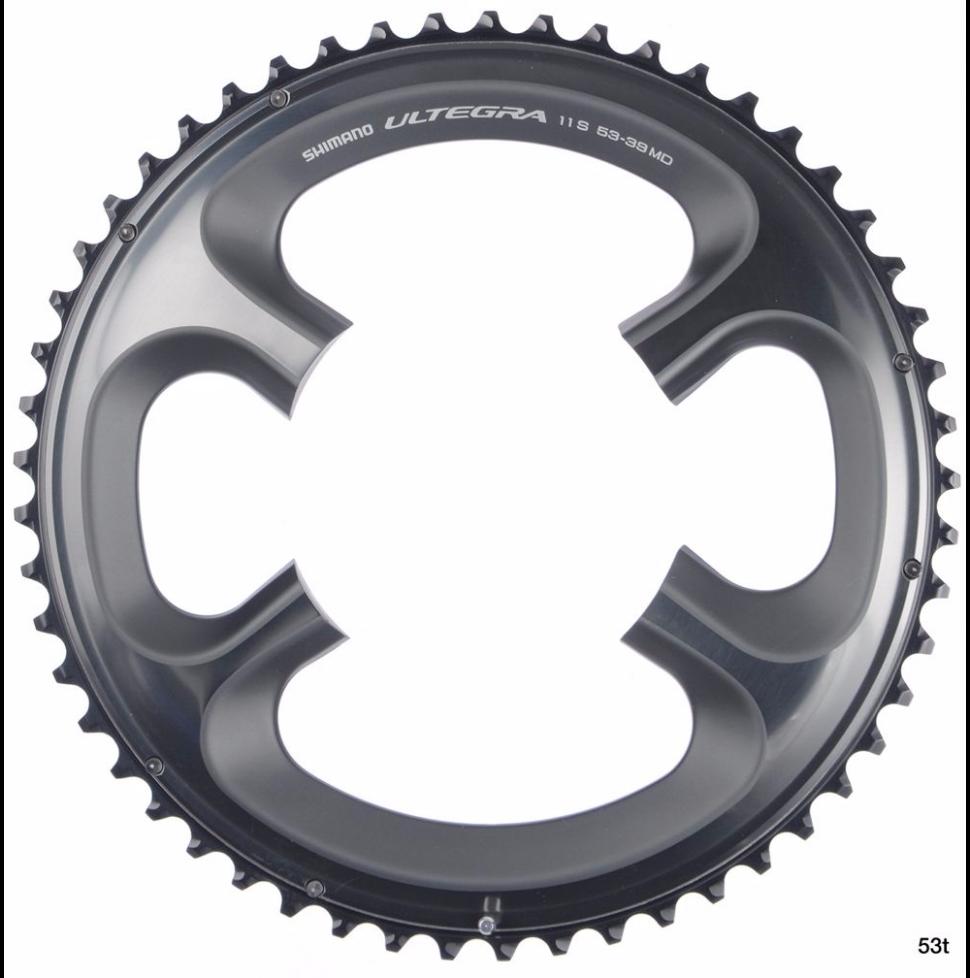
Add new comment
87 comments
Went an ordered the 52/36 in 175mm. 2.5mm longer than my current crank. I have a 31inch inseam and a bit of Googling seemed to suggest that 170mm would have been the best. Was a good price on the 175 though so thought I'd try it. Hopefully won't regret it..
SDC12024.JPG
Not necessarily, I'm 5'7" and ride 170s and 175s comfortably. I have friends who are nearly 6 foot and ride lower saddles than me because they are all back with short legs.
They used to do Athena and Centaur in 165mm at least - still get Centaur 165mm under £ 100 (just) from Merlin
https://www.merlincycles.com/campagnolo-centaur-carbon-power-torque-chai...
Just checked Campagnolo tech docs and they don't list 165mm for any of the groupsets currently - not sure if that's a quirk of the documentation or not though...
I would take exception to this point, historically MOST chainsets will not let you do this. Shimanos and campagnolos old standards of 130 and 135mm prevent an inner ring of less than 38 or 39 respectivly. Yes some of the newer chainsets have been designed to allow almost anything but that is a very recent thing.
What exactly is your issue with this statement, mrmo? It looks entirely correct to me. In fact, there's no question about it.
"In many", it isn't many cases, for most 53/39 chainsets you can't fit compact chainrings. If you had said in some or in a few cases, or something else fine, but many suggests a lot, which isn't the case.
As a 53/39 campagnolo chainset user of older models I get what you are saying but in the grand scheme of life the universe and everything I and almost every other human being on the planet would suggest you divert your keyboard energy at something else.
Haha! 'Most' doesn't come into it. No one said 'most' apart from you!
To say "In many cases you can turn a standard chainset into a compact chainset simply by swapping the chainrings" is 100% correct. It does actually apply to the majority of Shimano's current groupsets (Dura-Ace, Ultegra, 105, Tiagra), for example, the majority of Campagnolo's current groupsets (Super Record, Record, Chorus), FSA K-Force Light, SL-K Light, Gossamer Pro ABS…
I even used the word 'modern'! "You can take a 53-tooth outer chainring off a modern Shimano 105 chainset, for example, and replace it with a 50-tooth chainring."
And I even explained, "This didn’t used to be the case. If you had a compact chainset with a 110mm BCD, you couldn’t fit larger Shimano chainrings with a 130mm BCD."
I also cautioned that, "You need to make sure you get new chainrings that are compatible with your chainset. Chainrings come with different bolt circle diameters (BCDs) and bolt spacings."
If that lot wasn't enough to explain it to you, you're on your own!
Thanks for taking part though.
Kinda off-topic but would it make a noticeable difference if I also went from a 172.5mm crank to 175mm on the new 52/36? Would I have to change my seat height to accomodate?
Would I notice a massive difference on a 53/39 & a 11/28 on the rear as opposed to 50/34 & 11/30 that I have now?
At the top end it's doubtful, at the other it may depend on how nasty and/or long climbs you do - I can think of a number of real climbs, and endless sims (e.g. Stelvio), that I really wouldn't fancy doing on a 39/28 but that's up to your ability and geography to a large degree.
From personal experience, the difference between 34x30 and 39x28 is indeed massive. It'll definitivelly contribute to building stronger lengs
On steep hills, yes. A really big difference. Anything that gets you down to an 80 cadence now will require you to push 14% harder on the pedals to go the same speed. It's the same as only having a 26 last sprocket now. however, it will only add 4% to your top spinning (down hill speed)
You do need to mess around. The 52 is larger than the 50. So the clearance at the front mech will be wrong. Mech needs raising and may need re-indexing. Chain should be ok.
Shame. Ruined my morning.
That doesn't sound worse than a day's worth of Youtube and fiddling though.
It's definitely no more than that and a useful thing to know., plenty of videos out there too (GCNs youtube channel have some decent stuff but there are others of course).
https://www.youtube.com/watch?v=Ea03ChN-7Vg
I have Ultegra 50/34 x 11 on my bike. Can I stick on a 52/36 Dura Ace crank? Or do I need to mess around with derailleurs and a new chain etc?
Feel like 52/34 would be my perfect chainset. Not sure if that can be made to work though.
Straight swap, assuming everything else like spindle diameter is the same . Are they the same era (ie not swapping 6800 for Dura Ace 7800/7900)?
Yeah it would be Ultegra 6800 to Dura Ace 9000. Straight swap sounds fantastic. Wouldn't have to take it to the bike shop then, confident I could handle that
Most of Shimano's double front derailleurs are meant to work with chainrings with a maximum difference of 16 teeth. 52/34 is just outside that at 18T difference. You might be able to get it to work, but it won't be ideal.
Mid-compact 52/36 and and compact 50/34 cranks are right at that limit. If you cross-chain in the small-small combination with these chainrings, you can find the chain can foul the inside of the big chainring.
Triple front derailleurs have greater capacity for variance in chainring teeth (22-24T or so) but will need a relevant shifter. With the most recent gruppos, Ultegra and 105 gave up support for triples, leaving only Tiagra 4700 to soldier on as the highest level Shimano gruppo with triples.
Switching from 52 to 53 requires two extra links of chain, if you do it properly (= according to Shimano's dealer's manual). So, from 50 to 52 should require at least as much extra chain length.
Oh no!
Shame, I'll have to try and get a chain today then. Was going to do the crank swap this evening, have it being delivered and the tools for it today. Thanks, will look into it!
..
Ive just swapped my old Ultegra 50/34 for a 50/36 a few weeks back. it's a simple and fast job. You do need a new chain though but the gears were simple just loosened the front cage/ cable, moved it up and retightened no real messing with gears was needed ☺
Pages